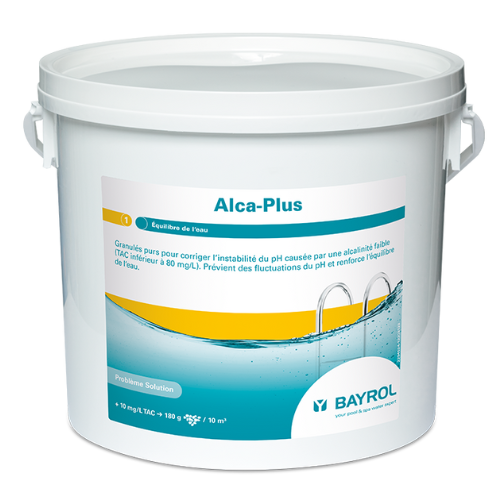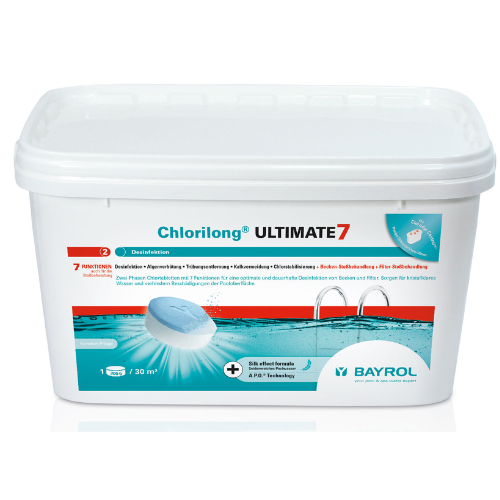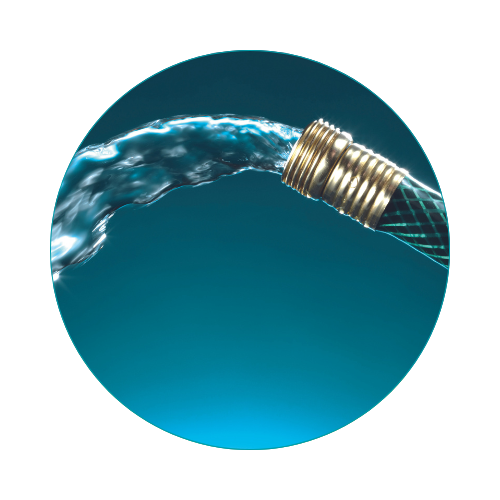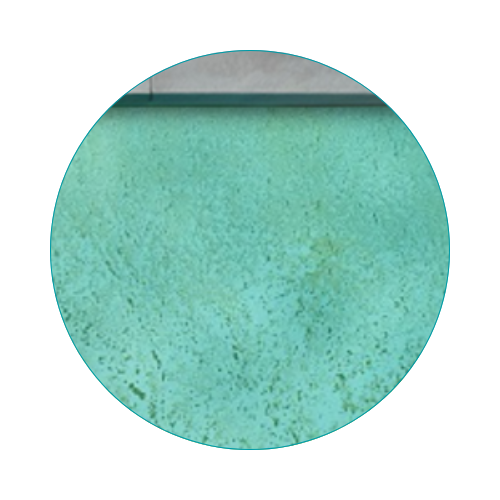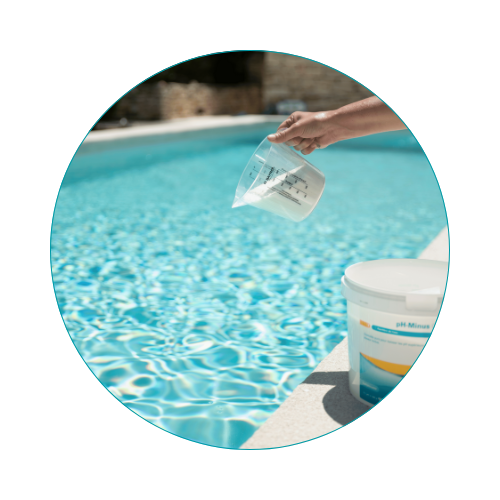➡ pH, what are the ideal values?
The ideal pH is between 7.0 and 7.4 for chlorine, salt electrolysis or active oxygen pools and between 7.0 and 7.6 for bromine pools.
➡ pH, how often to measure it
To maintain safe, balanced water, we recommend checking and adjusting the pH and disinfectant levels once or twice a week, and up to 2 or 3 times a week in hot weather or when the pool is heavily used.
➡ How to measure the pH?
Measure your pH with Quicktest test strips, the Pooltester pH/Cl or the Electronic Pooltester.
➡ TAC, what is the ideal value?
If necessary, increase the TAC to a value above 80 mg/L.
➡ TAC, how often to measure it?
Check the alkalinity of the water at the start of the season, then about once a month, and if the pH becomes acidic.
➡Which tool or device to use to measure the TAC?
Measure your TAC level with Quicktest test strips or the Electronic Pooltester.
➡ Which products to use to regulate the TAC?
To correct low alkalinity and increase your TAC, use Alca-Plus®.
➡ Swimming pool disinfectant, what are the ideal values?
The ideal chlorine level is between 0.5 and 2 mg/L. Ideal bromine levels are between 1 and 3 mg/L.
➡ How often should the disinfectant level be checked and adjusted if necessary?
To maintain safe pool water, we recommend checking and adjusting the disinfectant level once or twice a week, and up to 2 or 3 times a week in hot weather or when the pool is heavily used. In the event of water problems, heatwaves or bad weather, carry out a shock treatment.
➡ Which tool or device should be used to measure the disinfectant levels?
Measure your disinfectant levels with Quicktest test strips for chlorine, the Pooltester ph/Cl or the Electronic Pooltester.
➡ Which products to use for disinfecting
For continuous disinfection throughout the season, if you have a sand & glass filter, use Chlorilong ULTIMATE7, 7-function chlorine tablets for complete and regular disinfection of the pool and filter.
Chlorilong ULTIMATE7 tablets are two-phase tablets for 2-phase disinfection. A fast-dissolving blue layer for shock treatment of the sand filter and water and a slow-dissolving white layer for permanent disinfection, anti-algae, clarifying, anti-limescale and chlorine stabilising effects.
In the event of water problems, heatwaves or bad weather, apply a shock treatment.
➡ Stabiliser, what is the ideal value?
For manual chlorine treatment, the stabiliser level should ideally be < 100 ppm (or mg/l). When using an automatic dosing system (with liquid chlorine or salt electrolysis), we recommend a cyanuric acid content of between 30 and 50 mg/l.
➡ Stabiliser, how often should it be measured?
For outdoor pools, test the stabiliser level at the start of the season and afterwards whenever necessary.
➡ Which tool or device to use to measure the stabiliser?
Measure your stabiliser levels with the Electronic Pooltester. Or have your pool water analysed by a professional BAYROL dealer, bringing your pool water sample with you.
➡ How to lower the stabiliser in water?
The stabiliser in the water does not degrade, so the only way to reduce the cyanuric acid content is to renew some of the water (by renewing enough water each year and/or by washing the filter regularly).
➡TH, what is the ideal value?
The ideal TH for a pool is between 100 mg/L (ppm) and 200 mg/L (ppm).
➡ TH, how often to measure it?
Analyse your TH levels at least once at the start of the season.
➡ Which tool or device to use to measure TH?
Have your pool water analysed by a professional BAYROL dealer by taking a pool water sample with you.
➡Which products to use to prevent limescale?
Use Calcinex® to prevent the formation of limescale and to avoid the appearance of metal stains in the pool. The limescale remains in suspension and does not settle on the walls and bottom of the pool. It prevents the formation of rough surfaces. Calcinex® remains stable in the presence of chlorine, bromine or active oxygen.
How to do it
► Quicktest test strips: the simplest method
Simply dip the strip into the water directly in the pool and determine the value by comparing the colour of the strip with the colorimetric scale. Because the strip has fewer coloured fields than the Pooltester, the measured value is not as accurate.
 Simple and quick, this method nevertheless gives sufficient results for weekly monitoring and compliance with water parameters. We have the right test strips for analysing your pool water:
Simple and quick, this method nevertheless gives sufficient results for weekly monitoring and compliance with water parameters. We have the right test strips for analysing your pool water:
Quicktest for chlorine-treated pools
► The manual Pooltester: a fast, reliable solution
Chosen according to the treatment method, the Pooltester analysis kit measures the pH and disinfectant - chlorine, active oxygen or bromine - in your pool water.

Measurement is carried out by dissolving the tablets in a small container filled with pool water. The result can be read with the naked eye on a colour scale.
Pooltester pH/Cl for chlorine-treated pools
►The Electronic Pooltester: the most accurate solution
If you have problems with the quality of your pool water, or if you want an accurate analysis of your water, use an electronic tester such as the Electronic Pooltester. Accurate analysis allows you to optimise the dosage of treatment products.

The Electronic Pooltester measures pH, free chlorine, bromine, alkalinity and chlorine stabiliser values. These values are available quickly and displayed in digital format to one decimal place.
Reliable, accurate measurements based on the principle of photometry.
➡ Why do I need to test my pool water?
Testing your pool water ensures that the levels of the main parameters (pH, TAC and disinfectant) are correct, guaranteeing better water quality, greater swimming comfort and longer-lasting equipment.
➡ What should I do if the pH of my pool water is too high or too low?
➡ How do you measure the TAC of a swimming pool?
TAC can be measured using test strips or the Electronic Pooltester.
➡ How can you prevent water problems?
Maintain a regular routine of analysing your water, clean the pool frequently, make sure the filtration system is working properly and follow the 4 care steps from BAYROL.
➡ Who can help me if I have a water problem?
To help us give you the most accurate advice, take a sample of the water in your pool to your nearest BAYROL dealer.
Download the My Pool Expert app for an immediate, free diagnosis.
➡What's the best tool to choose for analysing the pool water?
There are several solutions available to you: test strips, Pooltester, Electronic pooltester.
➡ What are the 3 main parameters to monitor?
pH, TAC and disinfectant levels.


